
It has more accolades that space to mention, and it is known the world over by outdoor enthusiasts. Countless have tried to conquer its length in one shot, and many succeed. Most see it as a place to escape the rigors of modern life, and they do sections at a time, which punctuates mundane, cubicle-confined lives with serene mountain beauty and fresh air. The Appalachian Trail is a lot of different things to different people, but one thing it is for all of us; it’s OUR collective trail. Let’s explore the origin of this trail and see how it has become The Greatest Walking Trail in the World.
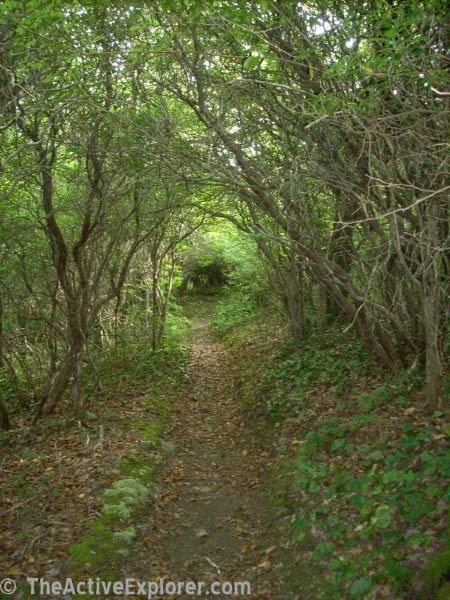
In 1921, a forester named Benton Mackay proposed his idea titled, “An Appalachian Trail, A Project in Regional Planning”. The project called for a trail which would connect various areas where city-slickers could come to work-study camps and learn about conservation, wildlife management, and gain an appreciation for the outdoors. With a little promotion, the idea quickly established support, and by 1925, the Appalachian Trail Conference (now called the Appalachian Trail Conservancy) had formed. Several other men were instrumental in the formation of what we think of as the AT today, but it really developed in stages as a patchwork of sections that had to be stitched together to create a singular trail. Arthur Perkins, Myron Avery, and Ned Anderson were some of the early influential leaders; with Avery serving as the ATC Chairman until his death in 1952. (Avery was the first to complete the trail end-to-end in 1936, though not as a “thru-hike”.)
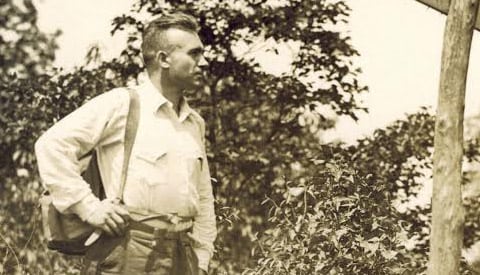
(Myron Avery Above)
By 1937, the AT was considered “complete”, and stretched from Maine to Georgia. A year later however, a major hurricane damaged much of the trail in New England, and the country was soon pulled into World War II. Manpower, especially volunteer manpower, was severely diminished, and the trail wasn’t fully traversable until 1951 when Earl V. Shaffer, was able to locate enough of the Trail to hike from Georgia to Maine in a single journey; something the ATC believed could not be done.

Murray Stevens of New York and Stanley Murray of Tennessee led the efforts to create Federal protection of the trail, and even garnered the support of then-First Lady, Lady Bird Johnson. In 1968, President Johnson signed legislation creating the National Trails System Act, 47 years after MacKaye’s original proposal was published. The A.T. became the first National Scenic Trail, which was designates as a unit of the National Park System. Mackay’s Dream was now a reality to be protected in perpetuity.
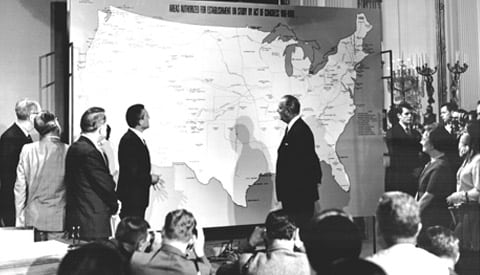
But the challenges were not yet over. There were scores of unprotected buffer areas, privately held portions, and areas of the trail threatened by development. The long journey to acquire these portions had to move forward; a legislative and procurement journey that was technically not complete until 2014.
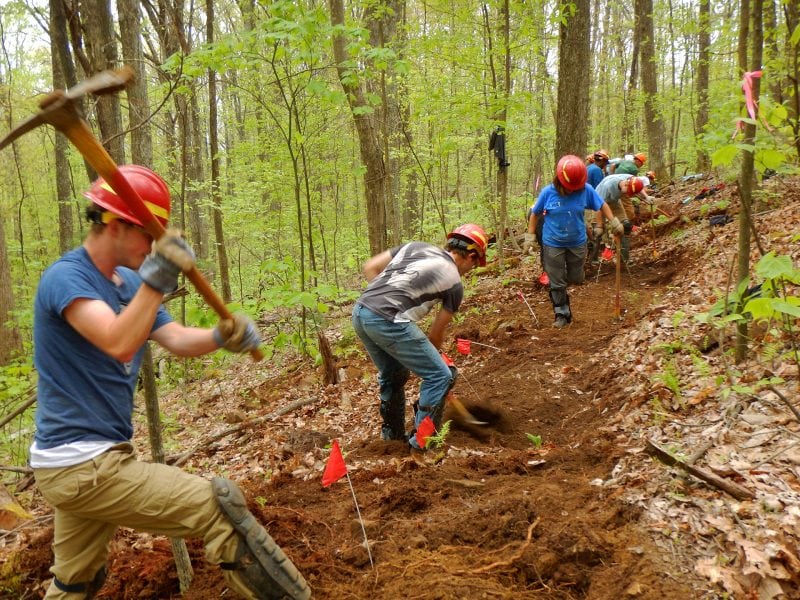
Today, the Appalachian Trail Conservancy is the administrator of the trail system, with oversight from the National Park System. It has stood as a model for successful trail stewardship and other trail organizations have emulated its successes. Other trail systems have even linked to it, such as the International Appalachian Trail, The Benton Mackay Trail, The Pinhoti Trail and The Eastern Continental Trail.
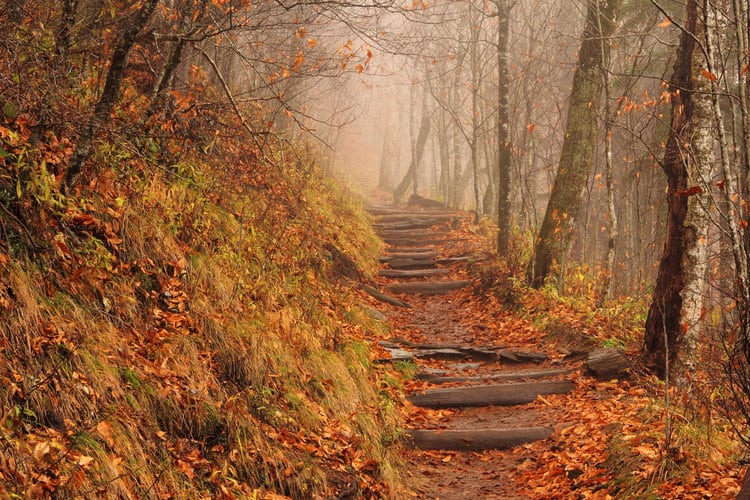
Located at Springer Mountain in Georgia, the southern terminus of the trail is reached from an approach trail out of Amicalola Falls State Park; which we covered in Newsletter Volume XI. The northern terminus is at Mount Katahdin in Maine. Some interesting statistics are as follows:
- More than 2,700 people thru-hike each year, and many books, documentaries, websites, and fan organizations are dedicated to the pursuit. Some hike from one end to the other, then turn around and thru-hike the trail the other way, known as a “yo-yo”.
- The Appalachian Trail, the Continental Divide Trail, and the Pacific Crest Trail form what is known as the Triple Crown of Hiking in the United States. In 2001, Brian Robinson became the first one to complete all three trails in a year. In 2015, Heather Anderson became the first woman to hold the unsupported record on the Appalachian Trail and the Pacific Crest Trail simultaneously.
- Several short segments of the trail, in towns and scenic natural areas, were built to ADA accessibly standards for wheelchair use.
- In addition to official shelters, many people offer their homes, places of business, or inns to accommodate AT hikers.
- Historically, only about 10% to 15% of those who make the attempt report to the Appalachian Trail Conservancy that they completed it. However, since 2001, the number of people starting out in Georgia to do a thru-hike (or at least registering to do so) has dropped considerably, yet the number of people reporting that they have completed a thru-hike has remained approximately the same. This has resulted in an apparent increase in the completion rate to 29%.
- Trail hikers who attempt to complete the entire trail in a single season are called “thru-hikers”; those who traverse the trail during a series of separate trips are known as “section-hikers”. Rugged terrain, weather extremes, illness, injury, and the time and effort required make thru-hiking difficult to accomplish.
- The Appalachian Trail is usually thru-hiked south to north (that is, Georgia to Maine) rather than vice versa. Most thru-hikers walk northward from Georgia to Maine, and generally start out in early spring and follow the warm weather as it moves north. These “north-bounders” are also called NOBO (NOrthBOund) or GAME (Georgia (GA)-to-Maine (ME)), while those heading in the opposite direction are termed “south-bounders” (also SOBO or MEGA).
- A thru-hike generally requires five to seven months, although some have done it in three months, and several trail runners have completed the trail in less time.
- The Appalachian Trail Conservancy gives the name “2000 Miler” to anyone who completes the entire trail. The ATC’s recognition policy for “2000 Milers” gives equal recognition to thru-hikers and section-hikers, operates on the honor system, and recognizes blue-blazed trails or officially required roadwalks as substitutes for the official, white-blazed route during an emergency such as a flood, forest fire, or impending storm on an exposed, high-elevation stretch. More than 11,000 people have reported completing the entire trail. About three-quarters of these are thru-hikers.

Fastest known times for self-supported attempts (meaning no vehicle or crew support, implying carrying a heavy backpack):
- Joe McConaughy completed the trail northbound, on August 31, 2017 in 45 days, 12 hours and 15 minutes.
- Heather Anderson completed the trail, southbound, on September 24, 2015, in 54 days, 7 hours and 48 minutes.
Fastest known times for supported attempts (the athletes travel light, relying on a support crew with food, shelter, medical treatment, etc.):
- Karl Meltzer, southbound, on September 18, 2016, in 45 days, 22 hours, and 38 minutes.
- Karel Sabbe completed the trail, northbound, on August 29, 2018 in 41 days, 7 hours and 39 minutes.
- Joe, Heather, Karl, and Karel are all considered officially NUTS
Age records
- On October 26, 2017, Dale “Grey Beard” Sanders became the oldest person to hike the entire Appalachian Trail at age 82. Dale must be one cool dude. I’ll be he carried an awesome Fiddleback Forge custom knife!
That is the abbreviated history of the Appalachian Trail. Next month we will explore the various regions and what you can expect to see if you get out and enjoy yourself on this fabulous outdoor playground. Thanks so much for reading. We hope you enjoyed this story!
